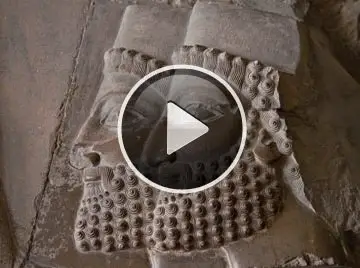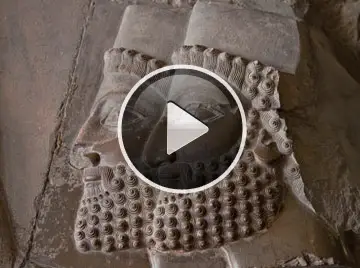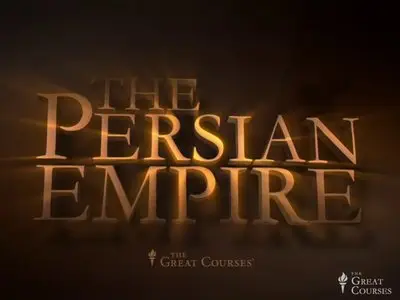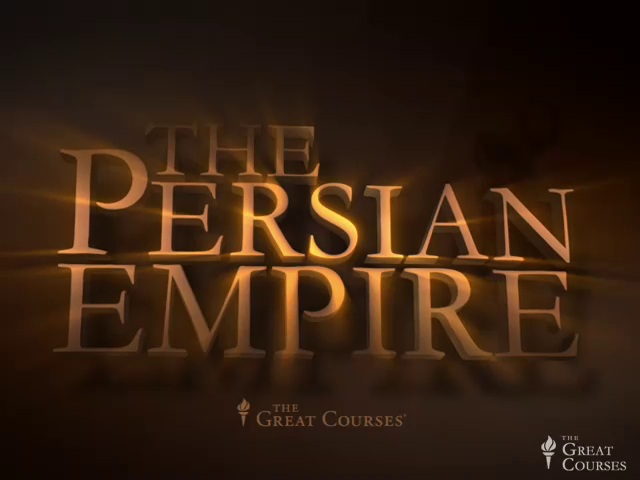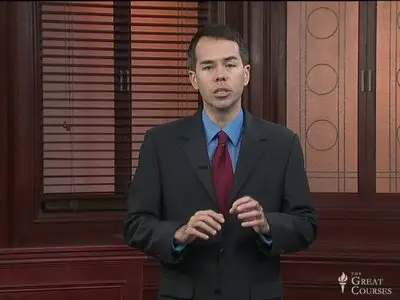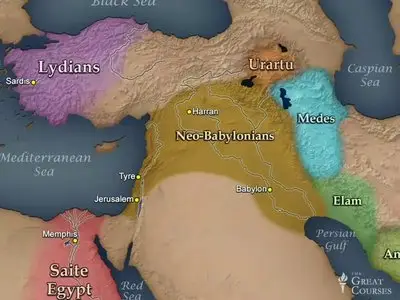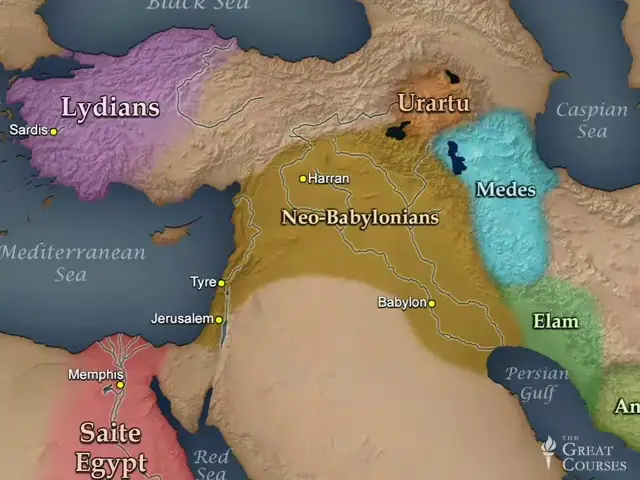TTC Video - The Persian Empire
DVD-Rip | MP4 | H.264 @ 1.3 Mbit/s | 640x480 | AAC Stereo @ 128 Kbit/s 44 KHz | 12 Hours | 8.2 GB
Genre: History | Language: English
DVD-Rip | MP4 | H.264 @ 1.3 Mbit/s | 640x480 | AAC Stereo @ 128 Kbit/s 44 KHz | 12 Hours | 8.2 GB
Genre: History | Language: English
COURSE DESCRIPTION
What do we know about the Persian Empire? For most of the past 2,500 years, we've heard about it from the ancient Greek perspective: a decadent civilization run by despots, the villains who lost the Battle of Marathon and supplied the fodder for bad guys in literature and film. But is this image really accurate?
Recent scholarship examining the Persian Empire from the Persian perspective has discovered a major force that has had a lasting influence on the world in terms of administration, economics, religion, architecture, and more. In fact, the Persian Empire was arguably the world's first global power—a diverse, multicultural empire with flourishing businesses and people on the move. It was an empire of information, made possible by a highly advanced infrastructure that included roads, canals, bridges, and a courier system. And the kings of Persia's Achaemenid dynasty —Cyrus, Darius, Xerxes, and others—presided over an empire that created a tremendous legacy for subsequent history.
The Persian Empire is your opportunity to see one of the greatest empires in the ancient world from a fresh new perspective: its own. Over the span of 24 fascinating lectures, Professor John W. I. Lee of the University of California, Santa Barbara—a distinguished teacher and an expert on the long-buried secrets of the ancient world—takes the role of a history detective and examines Persian sources to reveal what we now know about this grand civilization. Tapping into the latest scholarship on the Persian Empire, this course is sure to fill in some critical gaps in your understanding and appreciation of the sweep of ancient history and its undeniable effect on later civilizations. Including our own.
Meet Ancient Persia's Great Leaders and Everyday Citizens
According to Professor Lee, the Achaemenid Persian Empire was enormous, comprising 25 million people—only 1 million of whom were Persian. How did such a small minority manage such a large population? Why were these imperialists so tolerant of those under their rule, leaving untouched many of the subjugated population's local customs?
In The Persian Empire, you'll discover how the Persians were able to create and control such a vast empire. And the key to that success lay in the empire's greatest rulers, each of whom played a critical role in shaping and strengthening a civilization we still remember today. Among the fascinating leaders you'll meet are
Cyrus, ancient Persia's first Great King, whose pragmatic leadership solidified the empire;
Cambyses, who through military prowess expanded the Persian Empire into Egypt;
Darius I, who created Persia's imperial ideology and built up the empire's celebrated infrastructure; and
Artaxerxes II, who held the empire together in the face of civil war and restored its power.
But while these great kings were administering justice or waging wars, everyday Persians were just as important to the success of the empire. Professor Lee expertly moves between the historical record—the story of kings and battles—and the lives of ordinary people. You'll learn about
the empire's efficient communications network, which in some ways presaged today's globalized world;
the Persian economy and the workers and entrepreneurs who supported it;
the role of women in the empire, especially the power and influence of royal women;
the relationship between the state and the popular Achaemenid religion; and
the daily cultural exchanges between the diverse peoples of the empire.
Get at the Startling Truths about the Persian Empire
The Persians did not write histories, and no literature from ancient Persia survives; rather, the earliest historical narratives we have about this empire come from Greeks such as the historians Herodotus, Xenophon, and Ctesias. While important, these accounts detail the frequent wars between the Persians and the Greeks, and they tend to demonize the Persians as despotic barbarians.
Unfortunately, it's a stereotype that's persisted through the millennia. But The Persian Empire helps correct this misinformation by tapping into the ways that historians, within only the last 30 years, have been reconsidering this civilization. Professor Lee guides you through a wide variety of sources that finally get at the startling truths about the Persian Empire:
Histories written by non-Greek sources, including the Hebrew Bible
Persian administrative records and historical documents
Inscriptions by Persia's great kings, including Darius
Long-buried archaeological artifacts and ruins
By learning from these and other sources, you'll get to know the people and the culture of the Persian Empire on intimate terms. And, in doing so, you'll come to grasp a much fuller history of an important early empire.
For instance, despite the negative accounts of war, the Greeks and the Persians had many peaceful interactions. Many Greek doctors, craftsmen, and especially mercenary soldiers were comfortable serving under Persian rule. It was this tolerance and practical leadership, you'll learn, that allowed the Persians to maintain their powerful empire for hundreds of years.
Discover a Whole New History of the Ancient World
With The Persian Empire, and with Professor Lee, you'll discover a whole new history of the ancient world—a perspective largely unknown even by students of history. In fact, even today very few universities offer in-depth courses on ancient Persia. With these lectures, you'll find yourself on the cutting edge of historical research.
Recognized multiple times by the University of California, Santa Barbara for his teaching prowess and scholarship (including the Academic Senate Distinguished Teaching Award and the Harold Plous Award), Professor Lee is the perfect guide on your tour of this unique corner of the ancient world. With dozens of maps, animations, illustrations, and other informative graphics featured in the video versions of the course, you'll get to know the terrain of the empire, which stretched from the Mediterranean all the way to the Indus Valley in South Asia.
Spanning these thousands of miles, the Persian Empire was truly a force to be reckoned with in the ancient world. Its successes were great—and so were its failures. The empire's downfall to Alexander the Great and the Macedonians is a suspenseful tale of military cunning and historical circumstance. And while the Persian Empire ultimately fell, its legacy lives on in the areas of language, religion, and so much more.
Professor Lee's The Persian Empire captures the people, the strength, the rise, and the downfall of this great empire, revealing the complexity behind centuries of a previously one-sided history. Take this opportunity to complete your understanding of the ancient world and discover the humanity of the ancient Persians.
Lectures
01 Rethinking the Persian Empire
02 Questioning the Sources
03 The World before Cyrus
04 Cyrus and Cambyses—Founders of the Empire
05 Darius I—Creator of the Imperial System
06 Persian Capitals and Royal Palaces
07 The Great King—Images and Realities
08 Royal Roads and Provinces
09 East of Persepolis
10 Challenges in the West, 513–494 B.C.
11 Across the Bitter Sea, 493–490 B.C.
12 Xerxes Becomes King
13 Xerxes’s War, 480–479 B.C.
14 Cultures in Contact
15 Achaemenid Religion
16 From Expansion to Stability, 479–405 B.C.
17 The War of the Two Brothers
18 Persian Gold
19 City and Countryside
20 Women in the Persian Empire
21 Artaxerxes II—The Longest-Ruling King
22 Persia and Macedon, 359–333 B.C.
23 The End of an Empire, 333–323 B.C.
24 Legacies of the Persian Empire


